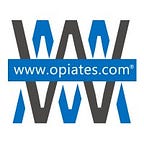The Essential Guide to Naltrexone and Naloxone in Opioid Dependency and Overdose Management
The opioid crisis continues to challenge our healthcare systems, demanding effective treatments and immediate interventions. Central to this fight are two critical medications: naltrexone and naloxone. Though they may be easily confused due to their similar-sounding names, their functions in the battle against opioid misuse are distinct and indispensable. This comprehensive guide aims to elucidate the differences between naltrexone and naloxone, shedding light on how they fit into the broader context of opioid addiction treatment and emergency care.
Naltrexone: A Pillar in the Opioid Recovery Process
Naltrexone stands as a beacon of hope for those navigating the rocky path to recovery. As an opioid antagonist, it serves a pivotal role in sustaining abstinence from opioid use. Its mode of action is non-narcotic — it binds to opioid receptors without causing the release of dopamine, hence preventing the ‘high’ associated with opioid use. Its two forms — the oral tablet (ReVia or Depade) and the monthly extended-release injection (Vivitrol) — provide flexible options for those committed to long-term sobriety. For individuals who have undergone the Waismann Method of rapid detox, naltrexone offers a subsequent layer of support, reinforcing the foundation laid by the initial detox process.
Naloxone: The Frontline Defense Against Opioid Overdose
Naloxone’s role is dramatically different but no less critical. It’s the emergency response to opioid overdoses, with a well-earned reputation as a life-saver. Marketed primarily as Narcan, naloxone is an opioid antagonist that works rapidly to reverse the respiratory depression that characterizes opioid overdose. Its ability to restore normal breathing within minutes has made it an invaluable asset in first aid kits and emergency departments worldwide.
Differentiating Their Uses and Actions
Understanding the pharmacodynamics of naltrexone and naloxone is crucial. Naltrexone’s long-lasting effect is designed for ongoing management, helping to prevent relapse over extended periods. Naloxone, with its quick onset but short duration, is designed to provide immediate relief in life-threatening situations but is not a solution for long-term addiction management.
Implementing Safe and Effective Treatment Protocols
While the safety profiles of both medications are favorable, considerations for their use are paramount. Incorrect timing in administering naltrexone can precipitate a sudden and uncomfortable withdrawal. Similarly, while naloxone is generally safe, it can cause a sudden onset of withdrawal symptoms in someone with a physical dependency on opioids. Therefore, the implementation of these medications must be carried out by trained medical professionals, especially in the case of naltrexone, where careful monitoring is necessary post-detoxification.
Maximizing Recovery Success: Post-Detox Strategies with the Waismann Method Rapid Detox
Waismann Method Opioid Treatment Specialists set the gold standard for rapid detox and opioid detoxification care, integrating advanced medical protocols to secure a patient’s transition into a life free from opioid dependence. Upon completing the state-of-the-art rapid detoxification procedure, the
Waismann Method seamlessly incorporates the use of naltrexone, including its long-acting form, Vivitrol, to mitigate cravings and sustain the opioid-free status of patients.
This critical post-detox step is a cornerstone of the Waismann Method’s full-spectrum care, highlighting its commitment to safety, efficacy, and the well-being of its patients. By leveraging naltrexone’s receptor-blocking properties, the Waismann Method fortifies the recovery process, providing an added layer of defense against relapse. This practice underscores the method’s comprehensive approach, which pairs innovative detoxification treatments with ongoing support strategies designed for lasting sobriety and health restoration.
Beyond the Medications: A Holistic View of Recovery
The journey out of opioid dependence is a complex one, with many patients requiring more than just medication. Counseling, psychological support, and lifestyle adjustments are also core components of a successful recovery strategy. Understanding the role of naltrexone and naloxone within this broader therapeutic context is vital for health practitioners, patients, and their families.
Final Thoughts: A Commitment to Healing and Hope
The opioid epidemic has taken countless lives and affected families across the globe. Medications like naltrexone and naloxone are potent tools in our arsenal against this scourge. The Waismann Method’s incorporation of these medications post-detox illustrates a commitment to not just treating opioid dependency but transforming lives. As we continue to harness the power of medical innovation and compassionate care, we move closer to a future where addiction is not an insurmountable plight but a condition that can be effectively managed and overcome.
Sources:
Written by Clare Waismann, M-RAS / SUDCC II
Substance Use Counselor | Founder of Waismann Method® Opioid Treatment Specialists and Domus Retreat Recovery Center | Healthcare Writer and Advocate
If you found this article informative, there’s more to discover! Join me on a journey of education and empowerment by checking out our blog and tuning into our podcast.
